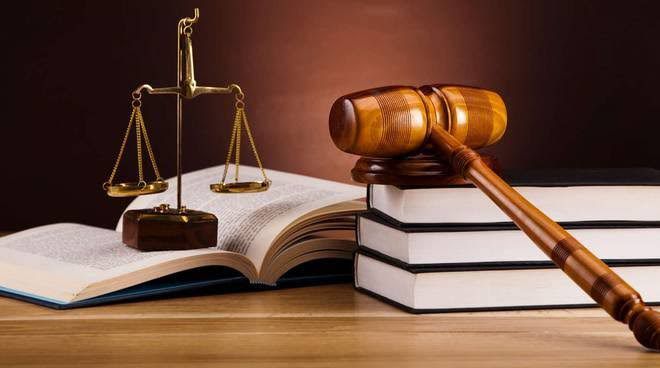Author: Riddhaa Bhattacharyya, KIIT School of Law
TO THE POINT
The case IPRS v. Aditya Pandey is an important decision that helps us understand how copyright works in the Indian music industry, particularly when it comes to songs used in films. The central issue was whether a cable operator needed permission from the Indian Performing Rights Society (IPRS), an organisation representing music composers and lyricists, to broadcast film songs that were already part of a sound recording. The case clarified the position of the law on what rights music creators hold once their work is included in a sound recording or a film.
ABSTRACT
This article discusses the Delhi High Court’s 2012 decision in the case between IPRS and Aditya Pandey. It focuses on the rights of composers and lyricists after their songs become part of films or sound recordings. The Court had to decide whether someone who publicly broadcasts these songs still needs a separate licence from IPRS. The judgment affected how copyright is interpreted in the context of film music and triggered later amendments to better safeguard the rights of original creators.
USE OF LEGAL JARGON
Under the Copyright Act, 1957, copyright is divided among various categories of creative works. A musical work is the composition, a literary work includes the lyrics, and a sound recording refers to the fixed version of the song that combines these elements. All these categories can have separate copyrights.
The Indian Performing Rights Society (IPRS) is a registered copyright society under the Copyright Act. It collects royalties on behalf of its members—usually composers and lyricists, when their works are played publicly or, communicated to the public through media such as radio, television, or public performances.
In this case, the legal question was whether someone broadcasting a song that was already part of a film or sound recording still needed a separate licence from IPRS, or whether permission from the producer or music label was enough.
THE PROOF
Aditya Pandey, a cable operator, was playing songs from Bollywood films as part of his services to viewers. These songs were already part of sound recordings and films. IPRS argued that even though the songs were already incorporated into films or sound recordings, the underlying musical and literary works still remained protected and separate. Therefore, they claimed that Pandey should have taken a separate licence from IPRS to legally play the songs.
The Delhi High Court did not agree with IPRS. The Court held that when a song is included in a sound recording or a film, and the producer has obtained the necessary rights from the composer and lyricist during the creation process, then anyone broadcasting the film or sound recording does not need a separate licence from IPRS.
This ruling had a grave impact on the copyright ecosystem. At that time, it meant that composers and lyricists could not claim royalties through IPRS for broadcasts or performances of songs that had already been made part of a film or sound recording, unless they had explicitly retained those rights in their contracts.
CASE LAW AND LEGAL IMPACT
The IPRS v. Aditya Pandey judgment followed earlier legal reasoning seen in Indian Performing Rights Society Ltd. v. Eastern India Motion Pictures Association (1977). In that case, the Supreme Court held that once a musical or literary work is incorporated into a cinematograph film, the film producer becomes the owner of the copyright in that work as used in the film. This meant the producer could control its use without needing to return to the original creators.
These interpretations were based on the wording of the Copyright Act at the time, which did not clearly preserve the ongoing rights of authors in commercial film music. As a result, even though composers and lyricists created the core content of the songs, they could not claim continued financial benefit once their work became part of a film. This created a major concern in the music industry, especially among those who relied on performance royalties for long-term income.
In response to these concerns, Parliament introduced the Copyright (Amendment) Act, 2012. This amendment made several important changes. It clarified that authors of literary and musical works used in sound recordings and cinematograph films retain their right to royalties. Specifically, Sections 18 and 19 were amended to say that these rights cannot be waived or signed away by contract. Even if an author assigns their copyright to a producer or label, they still retain the right to receive royalties when their work is communicated to the public.
This was a major shift in the legal position. It directly addressed the gap shown in cases like IPRS v. Aditya Pandey, ensuring that composers and lyricists would no longer lose out completely when their work is reused in various public formats.
The legal effect of the 2012 amendment can also be linked to other later developments in copyright enforcement. For instance, in Novex Communications Pvt. Ltd. v. Lemon Tree Hotels Ltd. (2018), the Delhi High Court reaffirmed that performance rights societies like IPRS or Novex must hold valid assignment rights to claim royalties. This reinforced the importance of clarity in how rights are assigned and retained, especially after the 2012 amendments.
CONCLUSION
The case of Indian Performing Rights Society Ltd. v. Aditya Pandey revealed important gaps in the law as it stood in 2012. While the Court’s interpretation was based on the existing Copyright Act, the judgment showed how easy it was for original music creators to lose out once their works were used commercially in films. The Copyright (Amendment) Act, 2012, tried to fix this imbalance by securing royalty rights for authors of lyrics and compositions.
Today, even when a song is part of a film or sound recording, the original composer and lyricist can still claim royalties when that work is communicated to the public. Societies like IPRS now play a much stronger role in collecting and distributing these payments. This case shows how legal interpretations and legislative reforms together shape the rights of creative professionals in India.
FAQS
1. What was the IPRS v. Aditya Pandey case about?
The case was about whether a separate licence from IPRS was needed by a cable operator who was playing film songs that were already part of sound recordings. IPRS argued that the composers and lyricists still held rights in the musical and literary works, even after the songs became part of a sound recording or film.
2. What did the Court decide?
The Delhi High Court ruled that if the producer had already obtained the necessary rights from the composers and lyricists while making the film, then a broadcaster did not need a separate licence from IPRS. This meant that the sound recording rights were enough for public communication.
3. Why did this matter to music composers and lyricists?
It mattered because composers and lyricists were not getting any share of the income when their work was reused, even though they were the original creators. The decision limited their ability to claim royalties through IPRS once their songs were part of a film.
4. What changed after the case?
The Copyright (Amendment) Act, 2012 addressed this issue by stating that authors of lyrics and music retain their right to royalties, even after assigning their copyright. It made sure that this right could not be waived off by contract.
5. What is IPRS’s role now?
Today, IPRS plays an active role in ensuring that music creators are paid fairly when their work is used publicly. It collects royalties on behalf of composers and lyricists and distributes them, especially after the 2012 amendments strengthened their legal rights.




